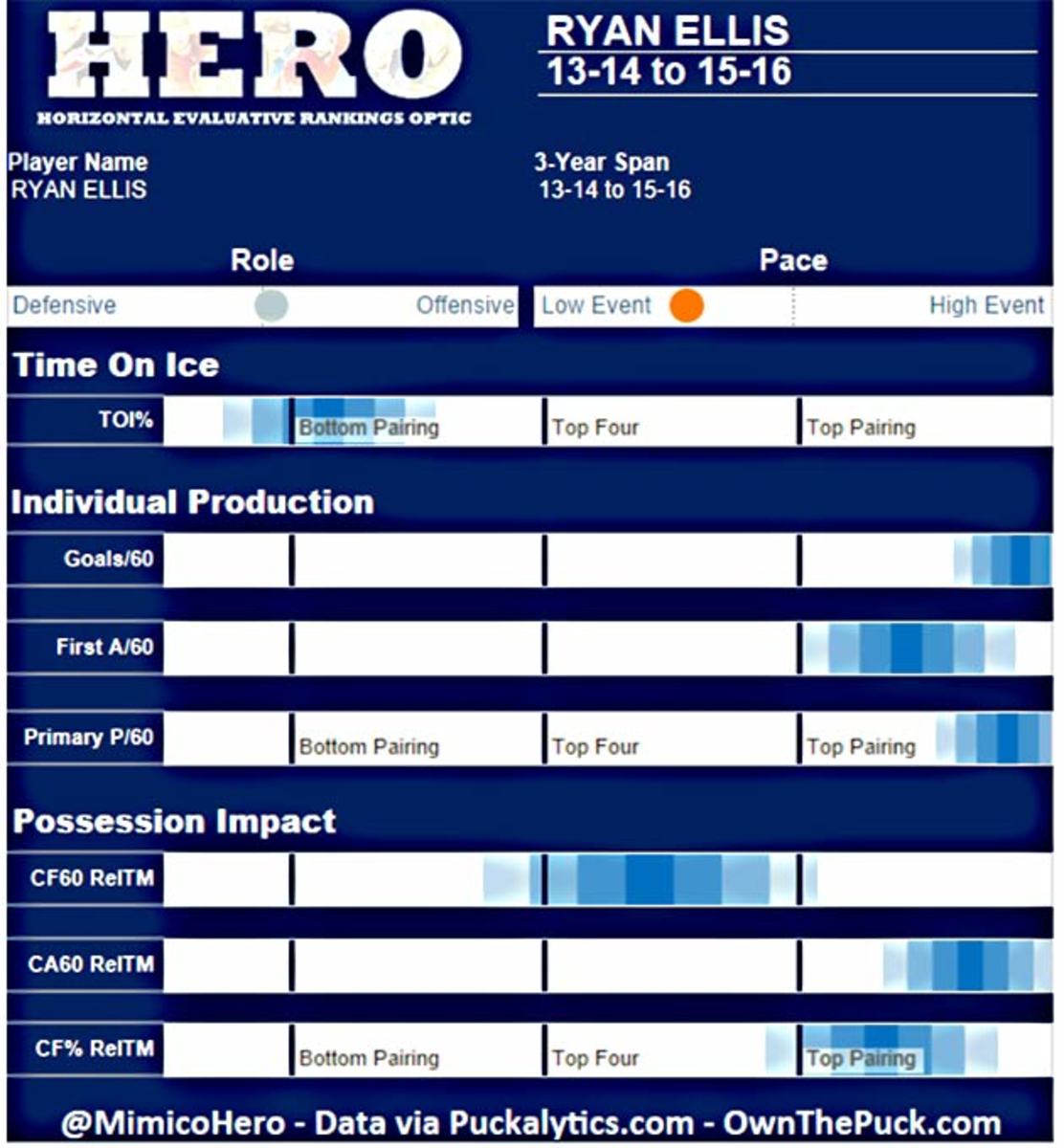Emergence of Ryan Ellis a key to the Predators’ Seth Jones trade

NHL Commissioner Gary Bettman announced that the Predators were on the clock, and as cameras panned to David Poile, Nashville’s longtime GM had to do his best to keep a straight face.
Despite owning the fourth overall selection in the 2013 NHL Draft, Nashville’s top-rated choice, Seth Jones, remained available. And, while the Preds had a well-documented forward issue, Poile knew he had to take the best prospect available: a 6' 3" defenseman who had drawn comparisons to Chris Pronger.
Poile likely thought about that moment during his recent negotiations with Columbus GM Jarmo Kekäläinen. The Blue Jackets had what the Preds had been seeking during their entire existence—a true No. 1 center—but to gain that asset, Poile needed to accept a difficult reality.
He had to part with the kid he couldn’t believe he was lucky enough to draft.
Blue Jackets, Predators pull off a blockbuster in Johansen-Jones swap
The trade, Jones for Ryan Johansen straight-up, looks like a win for both sides. Nashville acquired its star pivot; Columbus, mired in a nightmare season, got a young, skilled rearguard for someone who reportedly didn’t mesh with John Tortorella’s brazen coaching style.
As Poile mentioned on Wednesday, this shakeup wouldn’t have made sense if Predators defenseman Roman Josi wasn’t performing at such a high level. And Poile is right. But what often goes unappreciated, and what also makes this trade palatable, is the emergence of Ryan Ellis.
Poile signed Ellis to a five-year, $12.5 million pact in Sept. 2014, keeping the 23-year-old under contract through 2018-19 at a modest $2.5 million average annual value. It’s already looking like a great move: The 2009 first-round pick regularly gives Nashville a territorial advantage, skates in all situations and, thanks to his rocket of a slap shot, chips in offensively, too.
From the day he joined the organization, Jones was pegged as the right-handed D-man to work behind Shea Weber as Nashville evolved into a legitimate Stanley Cup threat. Now, Ellis is that guy.
“Ellis may be the smartest player on the current roster,” former Predator Stu Grimson said in June. “He makes the percentage play in most every case and is a playmaker to be sure. … Remarkably, for a smaller athlete playing defense—a position where size is typically preferred—Ellis has learned to outthink his opponent. The 24-year-old holds the middle ice well in his own zone and wins more than his share of puck battles.”
Early life tragedy steeled Justin Faulk for rise to NHL stardom
Ellis’s 5' 10" frame certainly isn’t ideal, but it isn’t holding him back, either. The eye test reveals this—he packs a mean punch for someone his size and is rarely overwhelmed—and the numbers like him, as well. For example, the Predators have seized 57.28% of all even-strength scoring chances this season when Ellis has been on the ice. Only Tampa Bay’s Victor Hedman has a better rate among D-men who have skated in at least 25 games.
Ellis is making frequent appearances in the box score, too, thanks to his 18 points (five goals, 13 assists) in 41 contests. With exactly one point per 60 minutes of 5-on-5 play, his production at even strength is in the same range as Duncan Keith’s (1.05), P.K. Subban’s (1.05) and Josi’s (1.04).
This success would have been less surprising in the past, back when Ellis was heavily sheltered in terms of deployment and competition. But his role isn’t what it used to be. His zone start percentage has dropped to near-even in 2015-16; his competition is stiffer than ever.
And even though Ellis’s job has become increasingly challenging, his possession numbers have continued to climb: Save for a small dip during the 2012-13 lockout-shortened campaign, his 5-on-5 Corsi percentage has risen steadily as his assignments have become more daunting—a testament to how much he’s improved as far as controlling play.
Truth is, Ellis has been creating offense at a first-pairing rate for years, and when he jumps over the boards, the ice is consistently tilted in Nashville’s favor. If you buy into advanced metrics, it should be clear that, while his ceiling isn’t as high as Jones’, he can be a long-term solution as the Preds’ No. 2 right-handed defenseman.

Ellis’s usual partner, Mattias Ekholm, doesn’t put up the same numbers, but he’s nonetheless evolved into a solid option in his own right. Like his counterpart, the left-handed Swede is signed to a team-friendly contract (six years, $22.5 million), helps drive possession and is a great fit in coach Peter Laviolette’s system.
“I think we’ve added minutes because we’ve been stronger defensively,” said Ellis. “We’re starting to prove ourselves and earn the trust that everyone wants. Especially protecting in our own end, we know that’s our No. 1 job. We try to contribute offensively whenever too. The added experience each game and that adjustment has helped earn the trust of the coaches.”
Given Nashville’s present roster composition, those two should be a reliable second pairing well into the future. Jones’s presence will be missed, but thanks to Poile’s ability to mine defensemen and lock up homegrown talent to cost-efficient deals, he was able to add a No. 1 center while maintaining an enviable top four.
It was a necessary decision, one that might bring the Preds back to contender status.
“I think on balance, today, with having Ryan Johansen at center ice still with the defense that we have, our top four still being intact, I think that is a better balance for our club,” Poile said. “It gives us a better chance to win on a nightly basis.”
